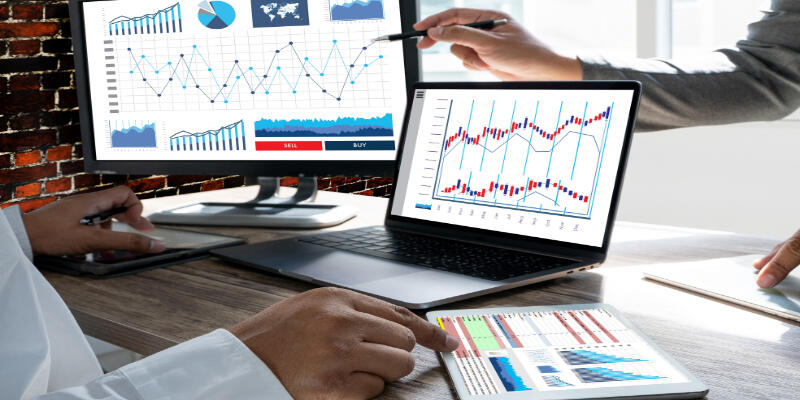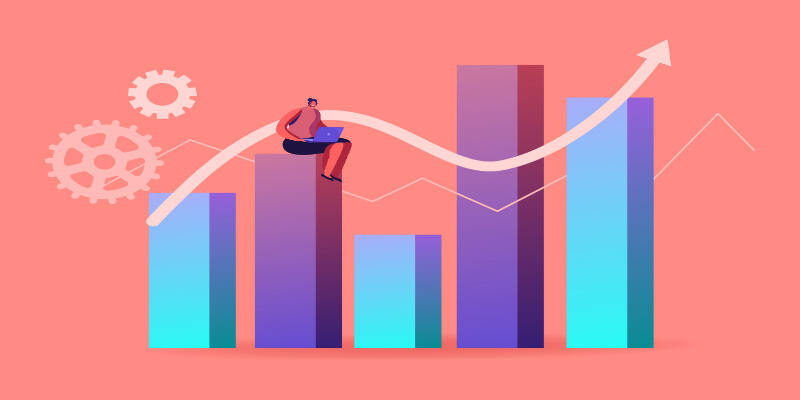Disclaimer: This post may contain affiliate links, meaning we get a small commission if you make a purchase through our links, at no cost to you. For more information, please visit our Disclaimer Page.
The majority of data scientists spend their time with Python, R, and SQL. The data manipulation and heavy lifting is typically done with these languages. But Excel is one of the most common tools used by data scientists.
Excel is a powerful must-have data analysis tool for a data scientist. Not only as a preference but also because Excel can effectively handle most of data science work. Both novice and experienced data scientists excel in their daily work, often in combination with other tools to get the job done.
Table of Contents
How do data scientists use Excel?
Excel has been in use since 1987. Nothing much has changed in the grid design and the sheets, making it an excellent editor for 2-D data (particularly tables). Even though it’s not sophisticated enough for most data science needs, a good understanding of its powerful features can make it a secret weapon in your data science quest.
There are indeed better tools most suited for data analysis, but many data scientists regard Excel as a reliable, intelligent tool for extracting actionable insights from raw data. Here some ways a data scientist can use Excel to simplify their data analysis.
Use Excel to edit 2-dimensional data.
Tables form the best representation for 2-D data, and Excel’s table layout favors such data. The tables are easy to edit, format, customize with colors, and even share. Google sheets have made sharing easier as multiple users can edit simultaneously with a shared link.
The tables are designed to accommodate extensive data, at least over one million rows and 16,000 columns.
More to the built-in tables, there are the slicers, filters, cell formulas, window splitting, groupings, and other features which come in handy in editing the data.
Use Excel for advanced analytics.
If a platform can effectively use machine learning, then it’s fit for advanced analytics.
And, Microsoft has invested in making Excel an effective tool for this purpose. Excel has an Analysis ToolPak, which does machine learning with complex data analysis.
Even though ToolPak is a little old school, data scientists using excel find it as a valuable tool for both normal analytics and advanced analytics.
Use Excel with data scripting languages like Python to manipulate data.
If you were to run a VBA (Visual Basic Application) on Excel, the whole process would be cumbersome. But, you can easily manipulate data using better tools like Python and handle more extensive data without any performance issues.
Python will connect live to the active Excel sheet and fetch the table contents as you have organized it, like in ranges or list-objects. It’ll then execute the command, like calculate median, and then write it back in Excel.
The best thing is that you can do this to data in hundreds of thousands of rows in one sheet.
Use Excel to keep data at your fingertips.
What matters in data science is the ease of manipulating data and the ability to do whatever you want with it.
With Excel, there’s less automation, so you’re able to handle your data as you please, save as many versions of it as you want, and do free analysis.
For a newbie data scientist, Excel keeps the data manipulation process simple, especially when performing repetitive tasks on it. Transitioning to larger manipulations and more complex data becomes easy.
Benefits of using Excel as a data scientist
As you already know, Excel may not be the best data analysis platform there is. But, before disregarding it completely, let’s look at some benefits associated with using Excel.
Excel is straightforward and clear.
There’s a reason Excel’s interface has remained as simple as it is to date; it’s easy to see data on the spreadsheets.
When working on data, you may not have time to go around poking rows and columns to find the information you need, and Excel gives it right in front of you.
In most business settings, real-time data analytics contribute largely to business growth. Excel comes in as a good option in such a business, at least until other models are adopted.
Excel is best for non-specialists.
Business stakeholders are not technically–skilled enough to understand data if you present it in Python or R. That’s why they find data scientists who can communicate their findings in simplicity to the stakeholders for collaborative growth of the business.
Therefore, as the data scientist in the business, you can comfortably use Excel to export and share the information with the team. You can use other tools to manipulate the data, but use the ‘export to Excel’ function to package and share the information.
Excel is perfect for small data.
Data scientists dealing with small projects mostly use Excel to do their preliminary analysis. The ease in editing small-scale 2-D data and the excellent integration with other software tools make it an indispensable tool for data analysis.
Stakeholders may also entertain a back and forth exchange on a spreadsheet for smaller projects, especially where financial data is in question, and an entire data program is not necessary.
Excel is an excellent tool for work schedules.
Working in a team means that every team member has some tasks assigned to them. Team managers take advantage of Excel’s Scheduling feature to assign tasks to team members, outlining the project status, project deadline, and delivery status.
It’s used to store customer data in organizations.
Excel offers the simplest platform to store customer and client contact information in business organizations. The data is easily accessible and remains unaltered.
Such data requires little to no manipulation but can be updated constantly to keep the information relevant.
Downsides of using Excel as a data scientist
Excel is suitable for a data scientist but not good enough. Here are some reasons why.
Data is prone to distortion.
Data distortion happens when using tools and features on spreadsheets.
For example, if you’re changing data representation from tables to pie charts or graphs, data can get distorted through rounding-offs and estimations.
If that happens, the whole project is wrecked, and the results become inconsistent.
There’s possible historical data loss.
When updating data, a data scientist faces the risk of losing past data already in the database. If such a loss happens, data analysis efforts can paralyze and making it difficult to identify trends from past data.
It’s difficult to achieve accuracy on Excel.
Excel lacks tools for accurate data parsing, and it’s super easy to make mistakes when entering numerical data.
Not to mean that you can make mistakes on other platforms, but it’s far worse when working on Excel. If at one point you make an error in Excel, you’ll have a difficult time figuring it out.
Data reproducibility is difficult in Excel.
The number one reason for data analysis is to communicate and explain it to others.
However, in Excel, it’s almost impossible to explain the steps you followed to get your final result unless you open the original document and re-do the analysis.
In other programs like R, you’ll only need to press ‘Enter,’ and you can re-run the whole analysis and even add comments at every stage.
Conclusion
Excel may not be the best resume-building skill for data science, but its significance as a data management tool is undeniable. It’s only designed to handle so much, and therefore its limits cannot be overstretched.
For most data scientists, what matters is a complete data analysis with useful information to steer the business forward, regardless of the tool used to achieve it. And, if that tool is Excel, why not use it!


